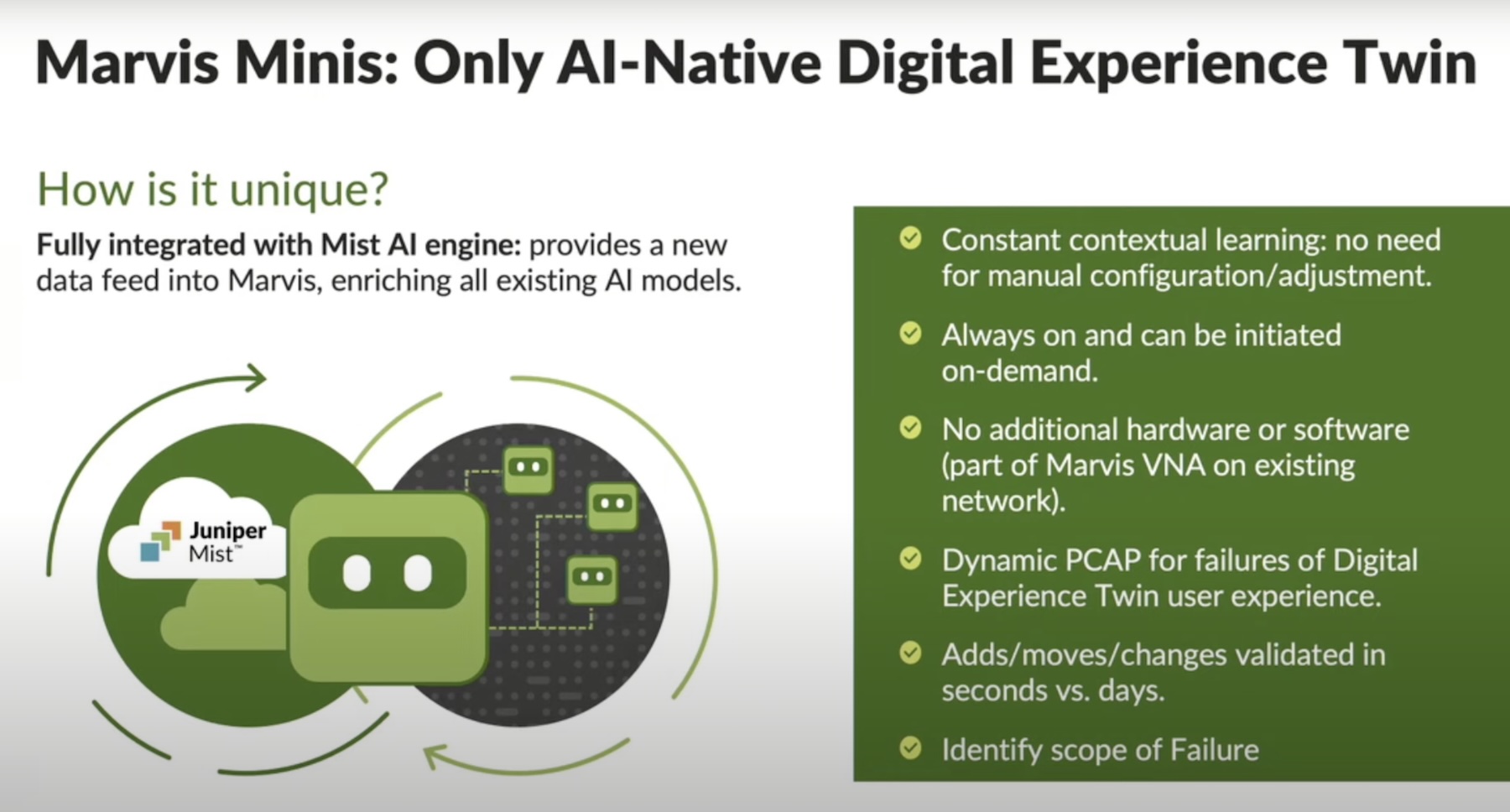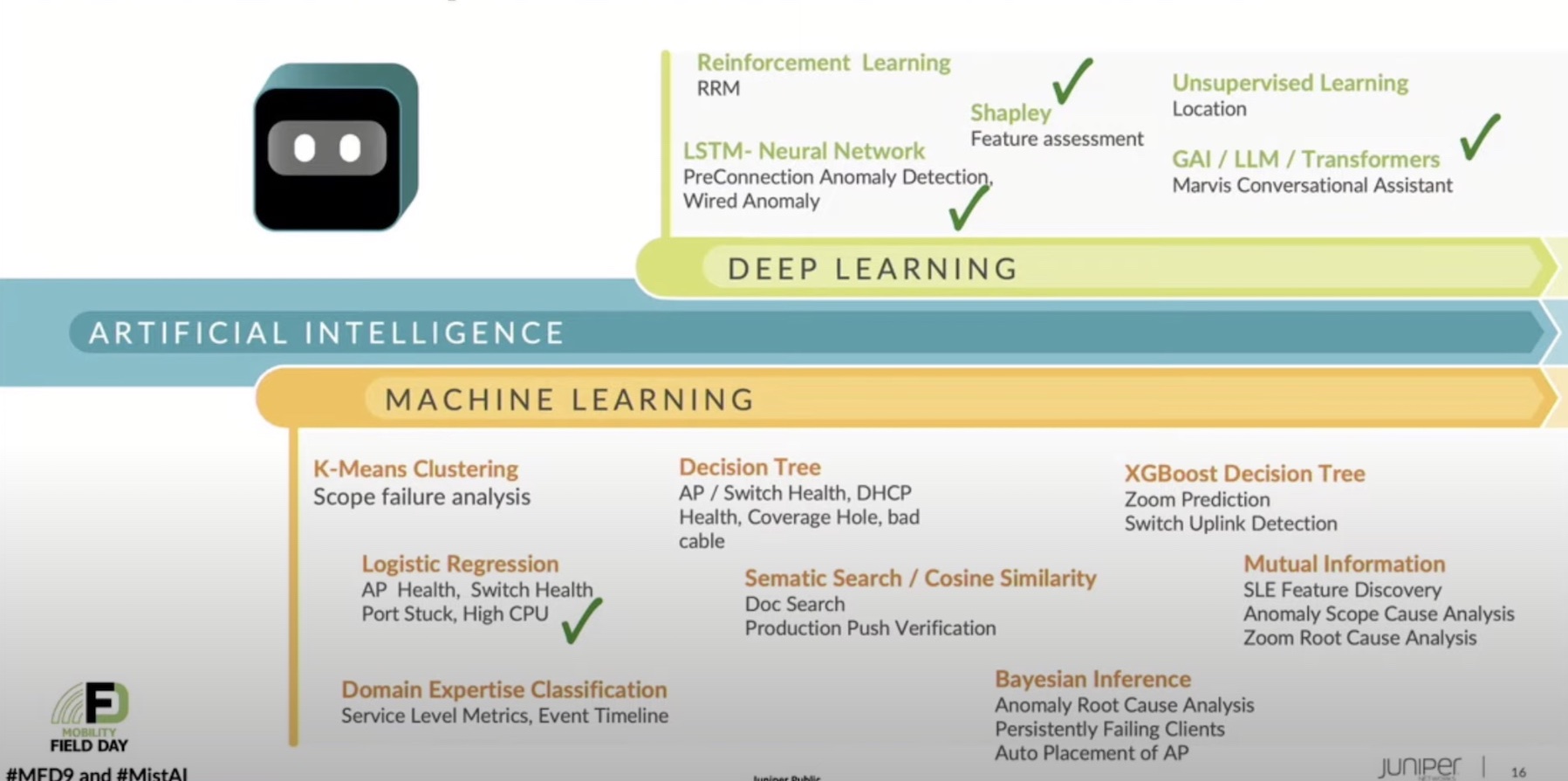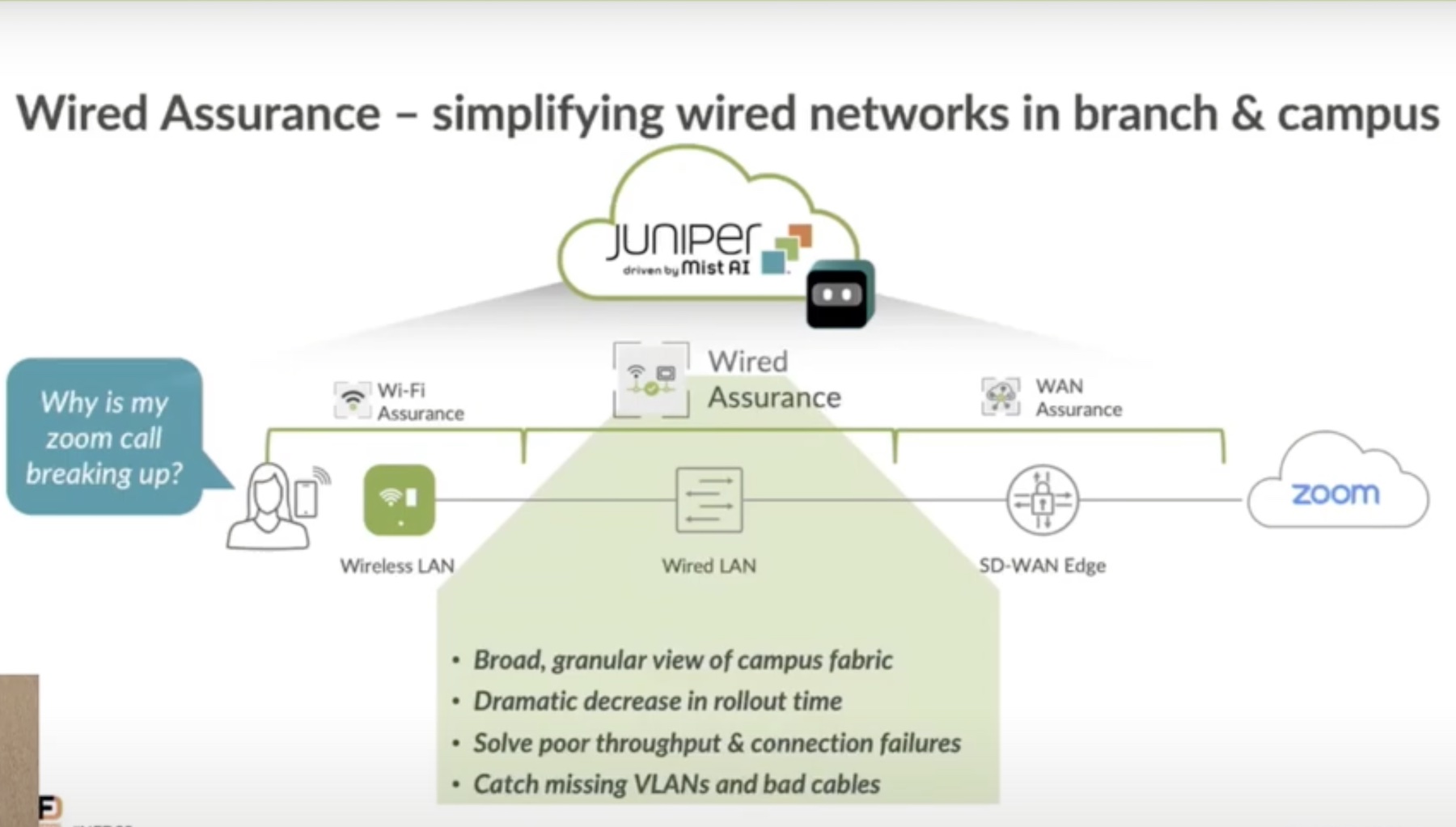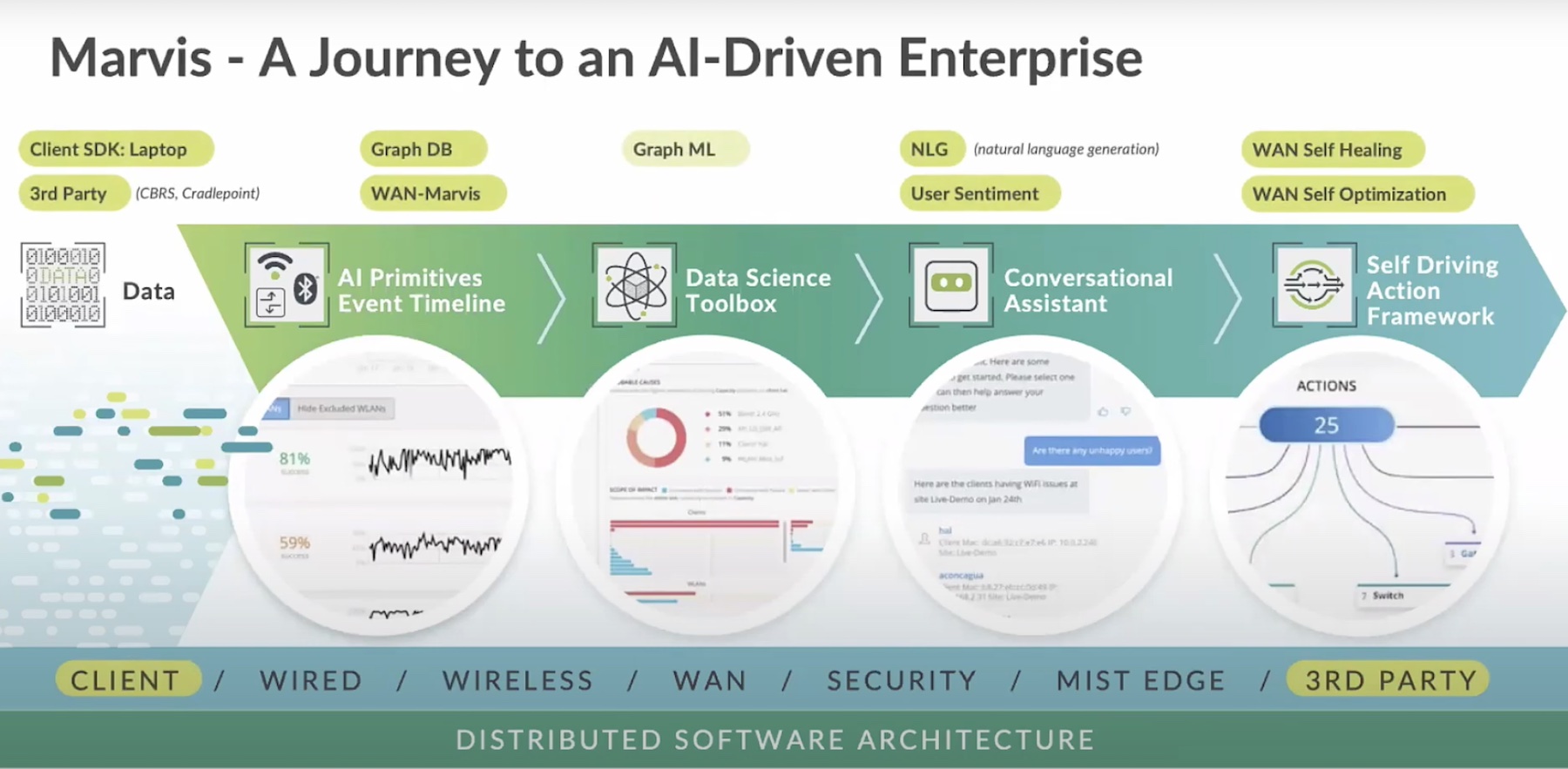A new category of AI apps is relieving the burden of grunt work at workplaces. We know them as AI assistants. The ones that are high in sophistication can provide helpful answers to questions in real-time and handle a pile of tasks on behalf of employees.
Juniper Networks’ Marvis is one such smart assistant. It is intelligent and efficient, and over time, has become a trusted tool for experiential optimization.
Ensuring Top-Notch Experience at Both Operator and User Ends
Marvis is baked into Juniper Networks’ AI-Native Networking Platform. It combines artificial intelligence and automation to help network engineers manage operational tasks and boost user experience. Its immediate focus is to reduce the busywork and give operators some breathing room in their schedule.
Through the years, Marvis has accumulated many new features which have made it a great tool to measure user experiences and reduce trouble tickets. At the recent Mobility Field Day event, Bob Friday, chief AI officer, announced the newest updates for Marvis that besides tuning up its efficiency, also provide experience assurance for end users.
“Marvis is our crown jewel,” says Sudheer Matta, GVP of product management. Juniper Networks dedicates a lot of resources to augment its capabilities to further the vision of a self-driving network.
“The reason why we started Juniper Networks with access points is because we wanted to make sure that we are going to get the data we needed to answer the question of why you’re having a bad mobile experience,” says Friday.
Marvis is anchored across APs, switch and SD-WAN to deliver on this. It enables Marvis to scrape more data closer to the device used – user state, Layer 3, application data – and hammer out granular insights around root causes.
Extending Marvis to WAN routers introduces more WAN features into Marvis. “When you look at what’s going on in your network, it’s usually not the wireless problem. The other big airfare is the WAN connectivity. When something goes wrong, half the time it’s somewhere in that WAN router in the mobile operator network that’s connecting you to the internet.”
Digital Experience Twin, a New Integration, and More Updates
A couple of recent updates that have made Marvis even sharper and more efficient are Zoom integration and Marvis Minis.
Information about things like packet loss, latency and service jitters are critical to ensuring uninterrupted experience on video conferencing apps. Integrating Zoom with Juniper Mist opened doors to collect these information from Zoom cloud and learn about call drops and audio/video degradations in real-time. Marvis uses the corelated data from Mist to drill into the causes of interference and provide real-time answers.
“Wireless has gone from nice-to-have to business-critical, and customers want to make sure whatever critical apps they put on the network – whether it’s a consumer app or a robot – that that is going to have a great experience. We need to really start focusing on why users are having a bad experience,” reminds Friday.
Marvis Minis is a digital twinning technology for wireless experience which launched earlier this year. Aimed to make Marvis even more proactive, Minis simulates user connections via unsupervised machine learning. This allows operators to learn about problematic network config changes that can negatively impact user experience, drill into context and identify the scope of issues, all ahead of time. Minis proactively highlights interferences and failures, and resolves them, overall reducing the number of tickets.

A data science team continuously oversees Marvis’ responses and works on the complex questions that are outside its current scope. “We review these with the data science and support team once a quarter, we go through a list of all the questions we can’t answer, and then we make pie charts of why we can’t answer them. What you quickly find out is we’re getting to the bottom of the barrel,” Friday informs.
Wi-Fi troubleshooting is now made easier with AI-Native Dynamic Spectrum Capture. This new feature provides enhanced visibility into RF spectrum helping trace the roots of wireless network interference accurately. This allows for speedy remote troubleshooting reducing the number of site visits.
In the upcoming update, Marvis Minis will be extended to wired connections. This will allow it to proactively identify switch authentication issues and generate prescriptive workflows to correct them before they affect user experience.
Marvis VNA is also available for the datacenter now. It provides proactive alerts and prescriptive actions working with Juniper Apstra, an intent-based networking software, to help operators stay on top of all issues. Additionally, through its conversational interface, operators can make queries in natural language in real time.
“This is really furthering the branch and datacenter better together story. This is for business-critical apps like point of sale, that you have running in your branch. When they go down, you need to immediately identify what layer of the network is causing the problem,” he says.
Marvis Application Experience Insights provides a deep dive into Zoom and Teams user experiences. Marvis leverages continuous learning and the Shapley data science model to learn from data across billions of user experience minutes. This enables Marvis to pin-pointedly predict issues in call quality during meetings.
Watch the complete Juniper Networks presentation from the Mobility Field Day event for a live demo of all the capabilities. Also check out Ron Westfall’s roundup of the Marvis updates in his article – “MFD11: Juniper Choreographs AI-Native Networking Breakthroughs” – at The Futurum Group website.




